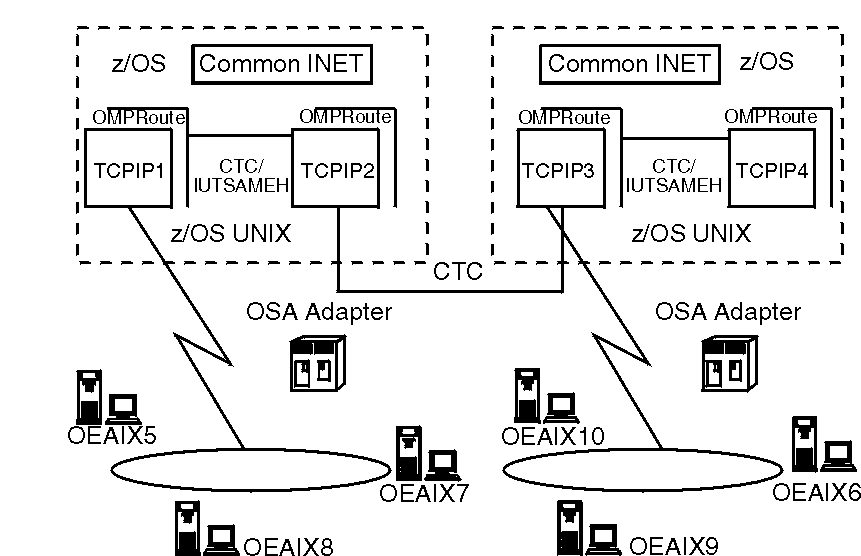Setting up for CINET
The CINET support enables an installation to connect up to 32 transport providers to z/OS UNIX. The user of the sockets library does not need to change any code to take advantage of the multiple transports connected to the kernel services.
z/OS Communications Server: IP Configuration Reference contains the sample TCP/IP configuration files.

Supporting multiple transports and providing a single AF_INET or AF_INET6 image to the user means that CINET must perform a set of management and distribution functions that govern how a socket behaves with multiple transports. A fundamental requirement for distributing work across multiple transports is the need to understand the IP configurations of each. The IP configurations are needed to determine which transport should handle a bind(), a connect(), or a sendto() to a particular Internet Protocol (IP) address. An IPv4 address is a 32-bit address defined by the Internet protocols, and an IPv6 address is a 128-bit address defined by the Internet protocols.
When the CINET function processes a socket request that requires it to select only a particular transport based on an input IP address from a user, CINET uses its copy of each transport's IP configuration to select the correct transport to process the user's request. Copies of the IP configurations are maintained by CINET internally and are only used for prerouting a socket call to the correct transport. The transport that is selected performs all of the official transport functions, such as IP routing, once the socket request reaches the transport from CINET.